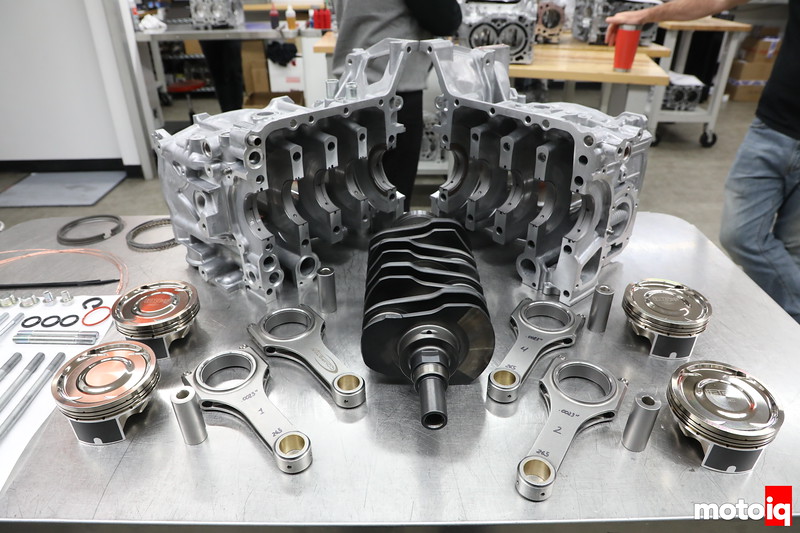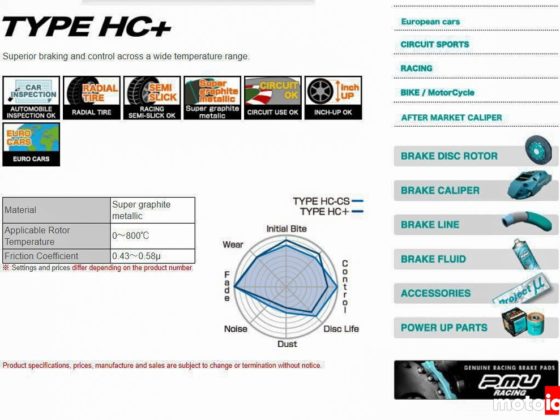
In part one of our series of building the motor for Project GD STI we talked about the IAG Performance engine cases we are using and all of the prep and state-of-the-art machining that went into them. We felt that that story was so compelling it deserved its own article. In this segment, we will talk about the rest of the super-cool IAG components that go into the bottom end.
Read all about project STI and the other chapters of this engine assembly!

For our motor, a brand new OEM 2017+ crank was used. The 2017 crank is improved over older varients as it is nitrided from the factory. Nitriding is a heat treatment done in a controlled environment that diffuses nitrogen and carbon into the surface of the metal and leaves a thin super hard layer of iron nitrate on the surface. This greatly improves wear, corrosion resistance, and fatigue strength.
IAG says that the stock crank is good for up to 800 hp. Unlike other builders, IAG does not recommend stroker cranks on the EJ257, especially for cars that see track use. Because Subarus have a small crankcase volume for their displacement, they have a problem with controlling crankcase pressure, ask anyone who tracks one of these cars. This is why they are many different air-oil separators and catch cans on the market for Subaru engines! IAG says a stroker crank makes crankcase pressure worse and stroked engines have a lot of issues with controlling all of the blowby and oil loss, even with return-type catch cans. Come to think about it, we have seen this ourselves with long-stroke Subarus at the track many times.

IAG chamfers the oil holes in the crank and balances them. We had them ship us our prepped crank and had it cryo treated by CTP Cryogenices and WPC treated afterward. Both Cryo and WPC improve fatigue strength. Cryo further contributes to the strength of the metal as it is an extension of the heat-treating process converting austenite to martensite as well as providing a more homogeneous grain structure and stress reliving the crank. Cryo enhances how the WPC treatment works by making the surface more homogeneous. WPC is a secret Japanese metal surface treatment process that produces a super hard and slippery surface that reduces friction, improves wear, and makes it super hard for a crack to propagate in which improves the life of a part. WPC and cryo are both compatible with nitriding and enhance how it works. If you look in our past history we use WPC in many of our engine builds and are now starting to use cryo treatment extensively as well. The fact the CTP is located in the same building as WPC and that they have a working relationship makes this much faster, cheaper, and more convenient to do.

We are using IAG’s closed deck cases for our build. IAG starts with brand new Subaru cases. You can check out part one to see how IAG produces them. We had our cases shipped to us to be cryo treated by CTP Cryogenics before returning them to IAG for assembly.

The IAG cases are bored out for 14mm ARP 2000 studs. They are also overbored by 0.25mm to clean up the distortion caused by the increased torque of the studs and the closed decking process. The main bearing bosses are also aligned bored or honed for the same reasons.




6 comments
I like the nickel coating on the pistons, nickel tends to hold onto carbon less than many ceramic coatings… and it looks dope.
Spotted a typo: Silicone should be silicon… although caulking would probably help with the blowby 😀
Nice boobs don’t hurt either.
Hey Mike,
Is there any chance that the WPC process could be applied to a bicycle chain? I’m imagining that the answer might be no due to the possibility of the WPC media getting into and actually remaining stuck in the bearings of the chain.
The other part of a bicycle where I could see WPC being effective would be the rear cassette and I can’t imagine any reason why this piece could not be done as it largely consists of metal discs.
I’ve never heard of anyone WPC treating bicycle components but I’ve always been curious if it could be done.
It would not work.
Does the nickel finish prevent the application of WPC treatment on the pistons?
I was worried about that so I didn’t WPC treat the pistons